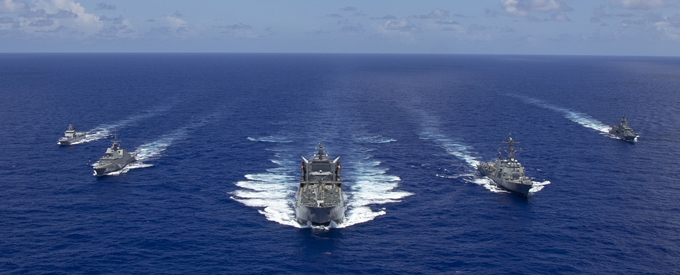2020-09-01
Hybrid Electric Drive Gives Navies a Lethal Edge
As the U.S. Navy focuses on building a new and more lethal frigate, much of the platform’s operating and warfighting capabilities will be sought as advanced off-the-shelf technology, giving the service an array of proven technology to quickly pull from.
The next-generation guided-missile frigate (FFG(X)) platform will require essential technologies from power and propulsion systems; communication systems; undersea warfare systems, and advanced energy storage. Companies that are long-time providers of naval technology, like Leonardo DRS, will be among the suppliers that the Navy will look to for capabilities that are proven and ready to be plugged into the FFG(X).
Lower Running Costs and Higher Efficiency
The FFG(X) will be a more capable ship than its predecessors, requiring a modern and efficient power generation and propulsion system. A more flexible power plant arrangement can benefit from technology that will make it a more capable warfighting ship.
Mature Hybrid Electric Drive (HED) systems are used widely by navies around the world. They bring multiple advantages to combat ships and are easily integrated into the propulsion system. The U.S. Navy FFG(X) can benefit from this technology on multiple fronts.
Legacy propulsion systems generate more noise and without a hybrid electric drive could prevent the FFG(X) from fulfilling its potential as a more lethal and survivable platform than LCS. But companies like Leonardo DRS, a leading HED development company, offer systems that are well-suited for a ship intended for anti-submarine warfare missions which involve long periods of cruising at relatively slow speeds. Because the HED can be decoupled from the gearbox and main propulsion engines, there is no gearbox noise and vibration, allowing the vessel to run silently.
This is increasingly important both for stealth and to perform its mission of detection of submarines as potential adversaries improve on how quietly their submarines are able to operate.
HED systems also provide lower operational and maintenance costs than traditional diesel and gas turbine propulsion plants. Hybrid motor operations produce less wear-and-tear on the main propulsion system, save fuel, and can have long-term operational costs savings.
HED systems are in use around the world, with the technology now built into the new Korean frigates. In the British Royal Navy, the technology is used on Type-26 frigates which allowed the elimination of the controllable pitch-propellers.
A HED system allows ships to operate much more efficiently at slower speeds, increases mission duration capability, reduces emissions and provides emergency take-home capability in the event of a failure of the main propulsion diesel engines. The Leonardo DRS HED offers crews operational flexibility when they need it, while significantly increasing cost savings in yearly maintenance and fuel.
Electric Propulsion Ensures Silent Operation and Better Survivability
The future clearly lies with integrated electric power propulsion for stealthy and economical nautical needs. The benefits of electric propulsion apply to naval unmanned surface vehicles and unmanned underwater vehicles too, both of which need to operate silently and clandestinely.
Compared to mechanical propulsion, electric is simply superior for stealth and delivers all the benefits required in terms of acoustics, emissions and detectability. Quieter operation entails that surveillance technologies can detect adversaries more easily and from further distances.
Survivability is another hallmark of Leonardo DRS’ electric solutions. Intelligent design enables these systems to be installed in different areas of the vessels to ensure that they are better protected and not directly coupled together. This system layout allows continuous operations even in damaged situations.
HED provides vital space and weight reduction for more fuel capacity or mission systems equipment such as the Vertical Launch System through the installation of fewer total engines and auxiliary systems with simpler inlet and exhaust ducting.
It also provides extra space for crew accommodation via a single-gas turbine hybrid architecture, enabling overall shorter ship lengths and enhanced affordability for given military capability. The enhanced range using controllable or fixed pitch propellers in concert with diesel-electric propulsion, provides higher system efficiency to meet and exceed threshold (and objective) range requirements with specified fuel capacity. With HED, a typical frigate operational profile achieves a 2 per cent -3 per cent fuel consumption savings over the conventional arrangement.
In addition, electric power propulsion systems provide more accurate condition monitoring than traditional mechanical systems. Therefore, performance with a HED propulsion system can be easily adjusted to address mission needs.
Leonardo DRS electric propulsion systems are mature, ultra-reliable and power-dense. These powerful electric and hybrid systems can provide special forces with the confidence and capability they need to fulfil and survive their riverine and near-shore missions.


No Comments